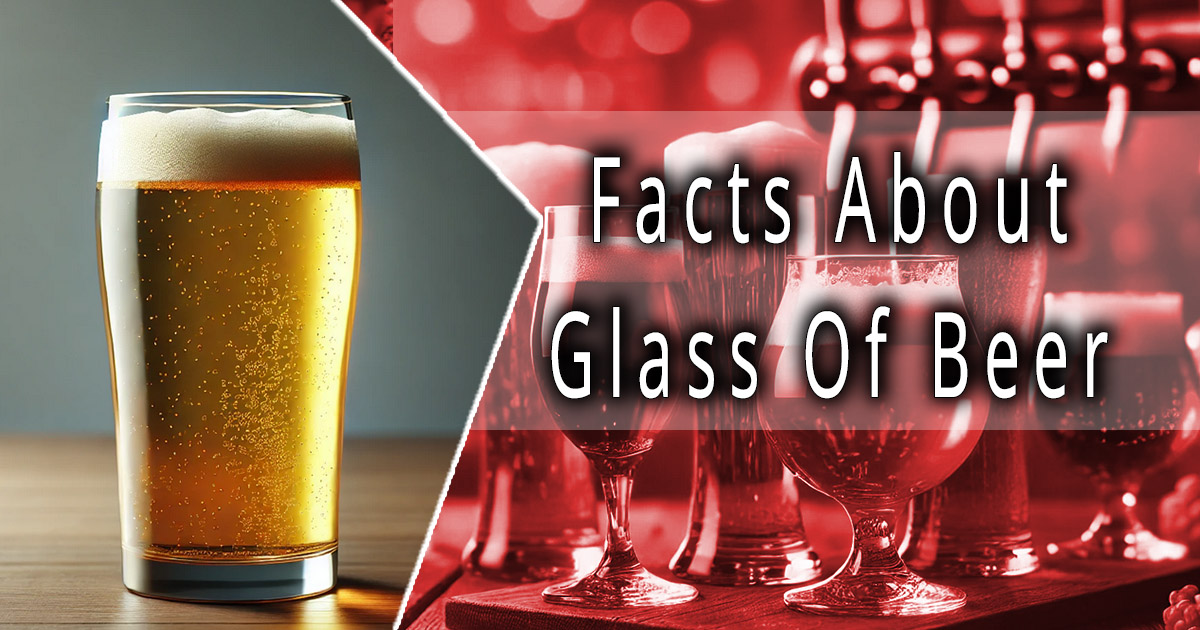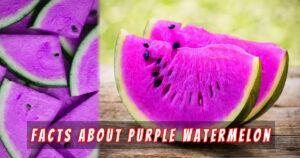Introduction
Whether you’re a casual beer drinker or a connoisseur, the experience of enjoying a well-poured glass of beer is unmatched. But did you know that the type of glass you use can greatly affect the flavor, aroma, and overall enjoyment of your beer? The relationship between beer and the glass it’s served in goes beyond aesthetics—it’s a science that influences everything from foam retention to taste enhancement.
In this blog, we’ll explore the importance of choosing the right glass of beer, the history behind various beer glasses, and how you can pour the perfect beer at home. Let’s dive into the fascinating world of beer glassware and elevate your beer-drinking experience!
1. Why the Glass Matters: The Science Behind a Perfect Glass of Beer
A glass of beer is more than just a vessel to hold your drink—it’s a tool that enhances your sensory experience. The design of a beer glass affects how the beer’s aroma, flavor, and appearance are perceived. But why does this matter?
The right beer glass does three key things:
- Releases Aroma: The shape of the glass plays a significant role in how the beer’s aroma is captured and released. Glasses with wider openings, like tulip or snifter glasses, concentrate the aroma, allowing you to enjoy the full spectrum of a beer’s scent.
- Maintains Head: A good foam head is essential for preserving the beer’s carbonation and flavor. Some glasses, like the pilsner glass, are designed to retain the head, which enhances the beer’s visual appeal and helps release its bouquet of aromas.
- Enhances Flavor: Different glass shapes direct the flow of beer to specific parts of your tongue, impacting how the flavors unfold. For example, tulip-shaped glasses enhance fruity and hoppy notes, while mugs and tankards highlight the maltiness of heavier beers.
So, whether you’re enjoying a pint of lager or a rich stout, the glass you choose can make a big difference in your overall beer-drinking experience.
2. 7 Types of Beer Glasses and Their Impact on Flavor
There’s no one-size-fits-all when it comes to choosing the best glass of beer. Here are seven types of beer glasses and how they affect your beer’s taste, aroma, and appearance:
1. Pilsner Glass
A tall, slender glass that’s perfect for light lagers and pilsners. Its shape helps maintain carbonation and shows off the beer’s golden color and bubbly effervescence. The narrow rim also supports a fluffy head.
2. Pint Glass
This is the most common beer glass, often used in bars and restaurants. Pint glasses hold a variety of beers, from pale ales to stouts, but they aren’t specifically designed to enhance aroma or flavor. However, they’re versatile and durable for casual drinking.
3. Tulip Glass
The tulip glass has a bulbous bottom and flared rim, designed to trap aromas and support a thick foam head. This makes it ideal for IPAs, Belgian ales, and saisons, where aromas and hop profiles are crucial.
4. Snifter
Snifters are typically used for strong, aromatic beers like barleywines and imperial stouts. Their wide bowl and narrow top concentrate the beer’s aroma, allowing you to savor every nuance.
5. Weizen Glass
Designed for wheat beers, the Weizen glass is tall with a wide mouth to accommodate the fluffy foam produced by unfiltered wheat beers. Its shape also enhances the fruity and spicy aromas common in hefeweizens.
6. Mug or Tankard
Mugs are heavy, sturdy glasses with thick walls and handles, ideal for serving darker beers like porters and stouts. The thick walls help maintain the beer’s cold temperature while the wide opening allows for easy drinking.
7. Stemmed Glass (Goblet or Chalice)
Used for strong Belgian ales and some abbey beers, the stemmed glass of beer is designed for beers with a high alcohol content. The wide bowl of the glass of beer enhances both the aroma and the visual appeal of these complex brews.
Each type of glass of beer plays a crucial role in accentuating specific aspects of your drink. By choosing the right glass of beer, you can amplify the taste and aroma, creating a more immersive beer experience.
3. The History of Beer Glasses: From Tankards to Tulips
The history of beer glasses is as rich and varied as beer itself. The evolution of beer glassware has been shaped by cultural, social, and technological influences over the centuries.
Tankards and Mugs: A Medieval Tradition
In medieval times, beer was often served in wooden tankards or mugs. These sturdy vessels were practical for everyday drinking, especially in taverns and inns. Later, pewter and ceramic tankards became popular, adding durability and a sense of style to beer drinking.
The Shift to Glass: Transparency and Elegance
By the 17th century, advances in glassmaking technology allowed for the production of clear glass beer vessels. This was revolutionary because it allowed drinkers to appreciate the color and clarity of the beer for the first time. The use of glass spread across Europe, with beer halls and pubs adopting it for its aesthetic appeal.
Modern Glassware: Function Meets Flavor
Today, beer glassware is designed not just for aesthetics but for enhancing the beer itself. Craft beer culture has driven the development of specialized glasses, such as snifters and tulips, which highlight the flavors, aromas, and textures of various beer styles.
From medieval tankards to modern tulip glasses, the evolution of beer glassware has changed the way we experience and enjoy a glass of beer.
4. How to Pour a Perfect Glass of Beer
Pouring a beer might seem simple, but there’s an art to getting the perfect pour that ensures the right amount of foam, also known as the head, and releases the beer’s aromas. Here’s how to pour a perfect glass of beer:
1. Start with a Clean, Chilled Glass
Begin with a clean glass to ensure no residue interferes with the beer’s flavor. If possible, use a glass that’s been chilled (but not frozen), as this helps maintain the beer’s ideal serving temperature.
2. Tilt the Glass at a 45-Degree Angle
Tilt the glass slightly at a 45-degree angle and begin pouring the beer slowly. This technique prevents too much foam from forming at the start and allows the beer to settle smoothly.
3. Pour Halfway, Then Straighten the Glass
As the glass fills halfway, begin straightening it to pour the rest of the beer. This will help create the right amount of foam. A proper head should be about 1-1.5 inches thick, which helps release the beer’s aromas and maintain carbonation.
4. Avoid Over-Foaming
Be careful not to pour too aggressively, as this can cause the beer to foam excessively. Conversely, pouring too gently can result in a flat beer with little to no head, which diminishes the flavor and aroma.
Mastering the technique of pouring a glass of beer ensures that each sip is flavorful, aromatic, and perfectly carbonated. If you want to explore more about beer pouring techniques, visit Beer Advocate.
5. Glassware for Craft Beer: Enhancing the Tasting Experience
The rise of craft beer has brought about a renewed focus on using the right glassware to fully appreciate the complex flavors and aromas of different beer styles. Craft beers are often brewed with more distinctive ingredients, making it essential to choose the right glass to complement the beer. To understand more about glass materials, check out our guide on Crystal vs. Glass.
1. IPA Glasses
The shape of an IPA glass is designed to enhance hop-forward flavors, common in India Pale Ales. These glasses have a narrow bottom and wider opening, which traps and intensifies the citrusy, piney aromas of the hops.
2. Stout Glasses
For richer, darker beers like stouts and porters, tulip or snifter glasses are preferred. Their shape amplifies the roasted malt flavors, chocolate, and coffee notes often found in these types of beers.
3. Wheat Beer Glasses
Unfiltered wheat beers, like hefeweizens, require a weizen glass to showcase the beer’s cloudy appearance and allow room for the characteristic fluffy head.
Craft beer lovers can significantly enhance their tasting experience by selecting glassware that complements the unique properties of each beer style.
For more exciting blogs, visit our homepage MY Read Magazine.
7. FAQs About Serving Beer in the Right Glass
1. Why does the type of beer glass matter?
The type of glass affects how you experience the beer’s aroma, flavor, and texture. Different glasses are designed to enhance specific characteristics of certain beer styles.
2. What’s the best glass for IPAs?
The best glass for IPAs is typically a tulip or IPA-specific glass, which enhances the beer’s hop-forward aromas and flavors.
3. Can I use the same glass for all beer types?
While you can, using specific glasses for different beers enhances the drinking experience. For instance, a tulip glass enhances Belgian ales, while a weizen glass is perfect for wheat beers.
4. Why is a foam head important?
The foam head helps trap the beer’s carbonation and aromas, providing a richer flavor experience. It also affects the texture and mouthfeel of the beer.
5. Does glass temperature matter when serving beer?
Yes, serving beer in a chilled glass (not frozen) helps maintain the beer’s ideal serving temperature without diluting its flavor.
Conclusion
The next time you enjoy a glass of beer, remember that the type of glass you use can make a significant difference in how you experience the flavors, aromas, and overall enjoyment of your drink. Whether you’re savoring a crisp lager or a bold stout, choosing the right beer glass enhances every aspect of your beer tasting journey.
Cheers to enjoying your beer the way it was meant to be—served in the perfect glass!

Joseph Bush is a seasoned writer and researcher with over 7 years of experience covering a wide range of general topics, from lifestyle and technology to business and current events. He is dedicated to producing fact-checked, reader-friendly content that informs, engages, and empowers readers.
Throughout his career, Joseph has followed strict editorial guidelines, relied on reputable sources, and ensured every article meets the highest standards of accuracy and clarity. His expertise spans multiple fields, allowing him to explain complex topics in a way that’s easy to understand.
Passionate about continuous learning, Joseph stays updated on industry trends and best practices to deliver trustworthy, well-rounded insights. Readers can rely on his work for its credibility, depth, and real-world relevance.




